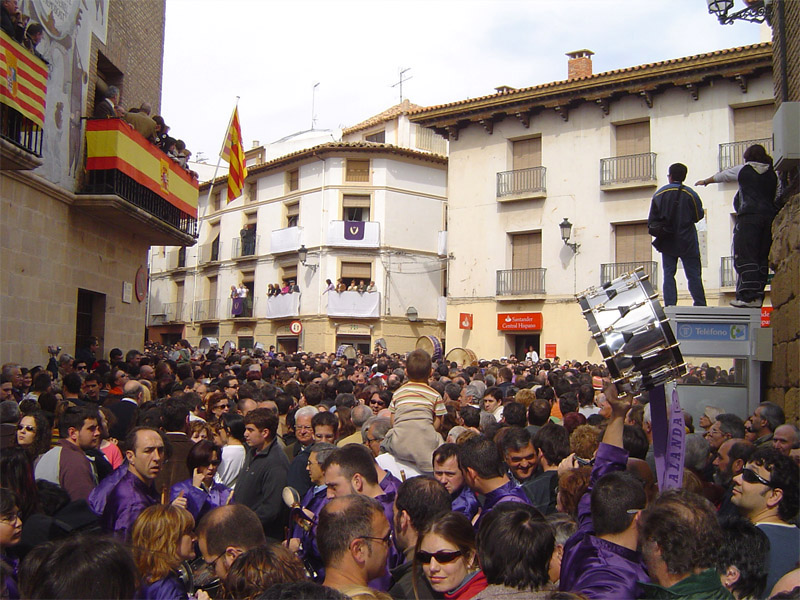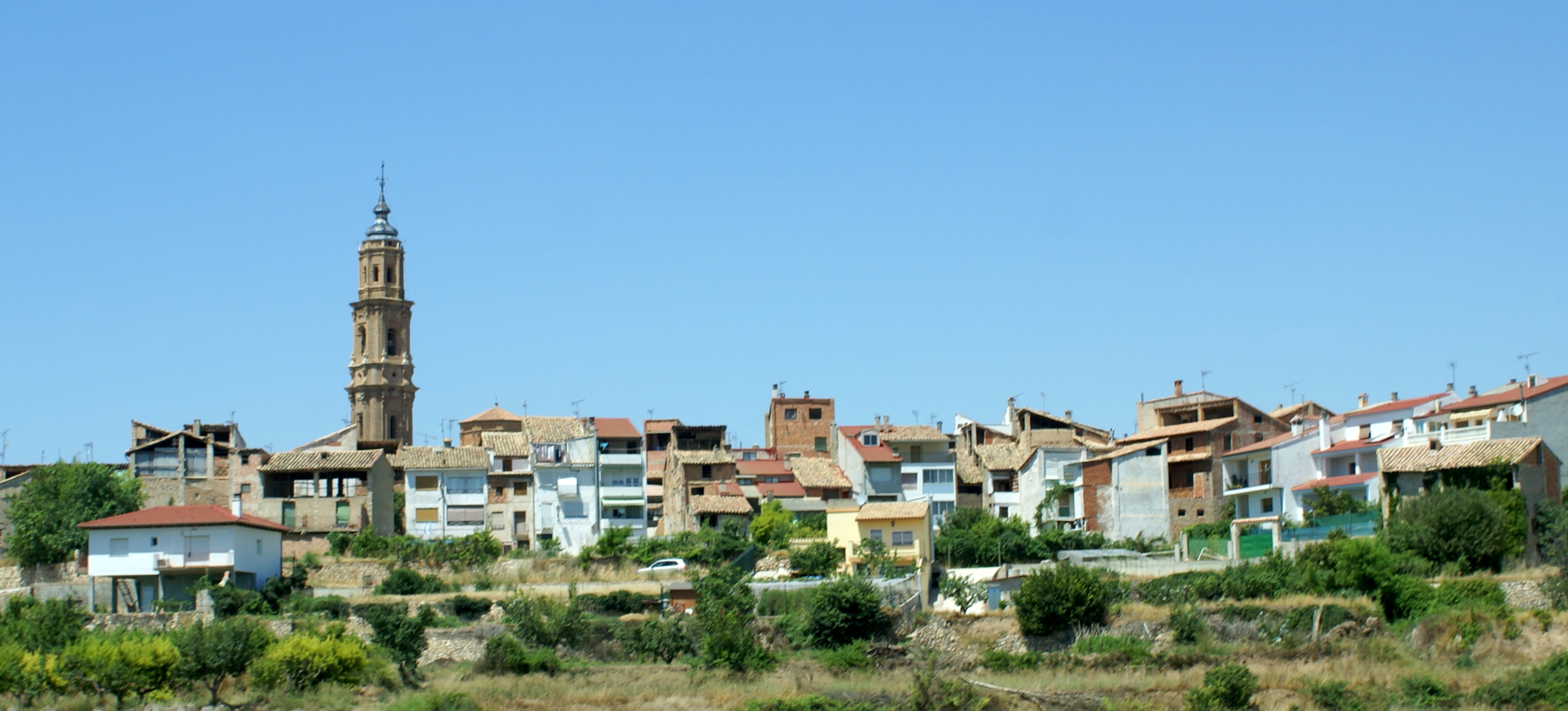|
Alcañiz
Alcañiz () is a town and municipality of Teruel province in the autonomous community of Aragon, Spain. The town is located on the banks of the river Guadalope. Alcañiz is the unofficial capital of the Lower Aragon historical region. It lies some 113 km from Teruel, the provincial capital, and 92 km from Zaragoza, the capital of Aragon. Alcañiz is the capital of the Bajo Aragón comarca and the second city in the province after Teruel. History The current settlement of Alcañiz dates to the Islamic era in Spain. It was captured by the Christian troops of Alfonso I of Aragon in 1119, but was later taken back by the Moors. It was conquered again by count Ramon Berenguer IV of Barcelona in 1157, and again lost, until it was finally recaptured by his son Alfonso II of Aragon. In 1179 the latter gave the town to the military Order of Calatrava. On 23 May 1809 during the Peninsular War, the Battle of Alcañiz was fought between a Spanish force led by General Bl ... [...More Info...] [...Related Items...] OR: [Wikipedia] [Google] [Baidu] |
Lower Aragon
Lower Aragon ( es, Bajo Aragón, an, Baixo Aragón, ca, Baix Aragó), also known as ''Tierra Baja'', is a natural region, natural and historical region in Aragon, Spain. The name "Lower Aragon" refers to the areas of the lowest altitude within the Ebro river basin, but the historical region encompasses only the river basins of several right tributaries of the Ebro River, namely the Matarranya River, Matarranya, Guadalope, Regallo, Martín River, Martín and Aguas River, Aguas, located between the Ebro and the Sistema Ibérico, Iberian mountain range. The demonym for Lower Aragonese people is ''bajoaragonés'' or ''tierrabajino''. The eastern fringes of the Lower Aragon natural region include some areas belonging as well to the Catalan-speaking strip in eastern Aragon known as La Franja and overlapping the historical Ilercavonia comarca. All the villages traditionally taking part in the characteristic and loud Drum and Bass drum Route during Holy Week processions are included i ... [...More Info...] [...Related Items...] OR: [Wikipedia] [Google] [Baidu] |
Bajo Aragón
Bajo Aragón (; an, Baxo Aragón; ca, Baix Aragó), or Lower Aragon, is an administrative comarca in eastern central Aragon, Spain. It was first established in 1999. It has a population of 29,358 (2007) and an area of 1.304,2 km2. The seat of the comarca is in Alcañiz. It is located in Teruel Province, in the transitional area between the Iberian System and the Ebro Valley. The municipalities of Aguaviva, Belmonte de San José, La Cañada de Verich, La Cerollera, La Codoñera, La Ginebrosa and Torrevelilla belong to the Catalan-speaking strip in eastern Aragon known as La Franja. Historical region The name ''Bajo Aragón'', Lower Aragon, was already used before 1999 for a much larger area, a historical region now sometimes called ''Bajo Aragón histórico'' in order to differentiate it from the present-day administrative comarca. Municipalities The Catalan version of the names of the towns are in brackets. * Aguaviva (Aiguaviva de Bergantes) * Alcañiz * Alcorisa ... [...More Info...] [...Related Items...] OR: [Wikipedia] [Google] [Baidu] |
Order Of Calatrava
The Order of Calatrava ( es, Orden de Calatrava, pt, Ordem de Calatrava) was one of the four Spanish military orders and the first military order founded in Castile, but the second to receive papal approval. The papal bull confirming the Order of Calatrava was given by Pope Alexander III on September 26, 1164. Most of the political and military power of the order had dissipated by the end of the 15th century, but the last dissolution of the order's property did not occur until 1838. Origins and foundation It was founded at Calatrava la Vieja in Castile, in the twelfth century by St. Raymond of Fitero, as a military branch of the Cistercian family. The etymology of the name of this military order, Calatrava, conveys the meaning: "fortress of Rabah". Rodrigo of Toledo describes the origins of the order: Calatrava is the Arabic name of a castle recovered from the Muslims, in 1147, by the King of Castile, Alfonso VII, called ''el Emperador''. Located in what was then th ... [...More Info...] [...Related Items...] OR: [Wikipedia] [Google] [Baidu] |
Tortosa
Tortosa (; ) is the capital of the ''comarca'' of Baix Ebre, in Catalonia, Spain. Tortosa is located at above sea level, by the Ebro river, protected on its northern side by the mountains of the Cardó Massif, of which Buinaca, one of the highest peaks, is located within Tortosa's municipal boundary. Before Tortosa, across the river, rise the massive Ports de Tortosa-Beseit mountains. The area around Mont Caro and other high summits are often covered with snow in the winter. Population centres * Bítem, 1.139; includes Santa Rosa * Campredó, 1.168; * Jesús, 3.755 * Els Reguers, 679 *Tortosa, 27.131 * Vinallop, 363, includes Mianes The municipality includes a small exclave to the west. History Tortosa (from la, Dertusa or , via ar, طرطوشة ''Ṭurṭūshah'') is probably identical to the ancient Hibera, capital of Ilercavonia. This may be the ancient settlement the remains of which have been found on the hill named Castillo de la Zuda. In Roman times, the to ... [...More Info...] [...Related Items...] OR: [Wikipedia] [Google] [Baidu] |
General Suchet
Louis-Gabriel Suchet (2 March 1770 – 3 January 1826), Duke of Albufera (french: Duc d'Albuféra), was a French Marshal of the Empire and one of the most successful commanders of the French Revolutionary and Napoleonic Wars. He is regarded as one of the greatest generals of the Napoleonic Wars. Early life Suchet was born to a silk manufacturer in Lyon. He originally intended to follow his father's business but, serving as a volunteer in the cavalry of the National Guard at Lyon, he displayed abilities which secured rapid military promotions. Revolutionary Wars In 1793, he was serving as a battalion chief (') when he captured the British general Charles O'Hara at Toulon. During the 1796 Italian campaign, he was severely wounded at Cerea on 11 October. In October 1797, he was promoted to command of a half-brigade ('). In May 1797, Suchet was one of three lieutenant colonels of the 18th Infantry Demi-brigade, with little hope of advancement. He was sent to Venice to p ... [...More Info...] [...Related Items...] OR: [Wikipedia] [Google] [Baidu] |
|



.jpg)